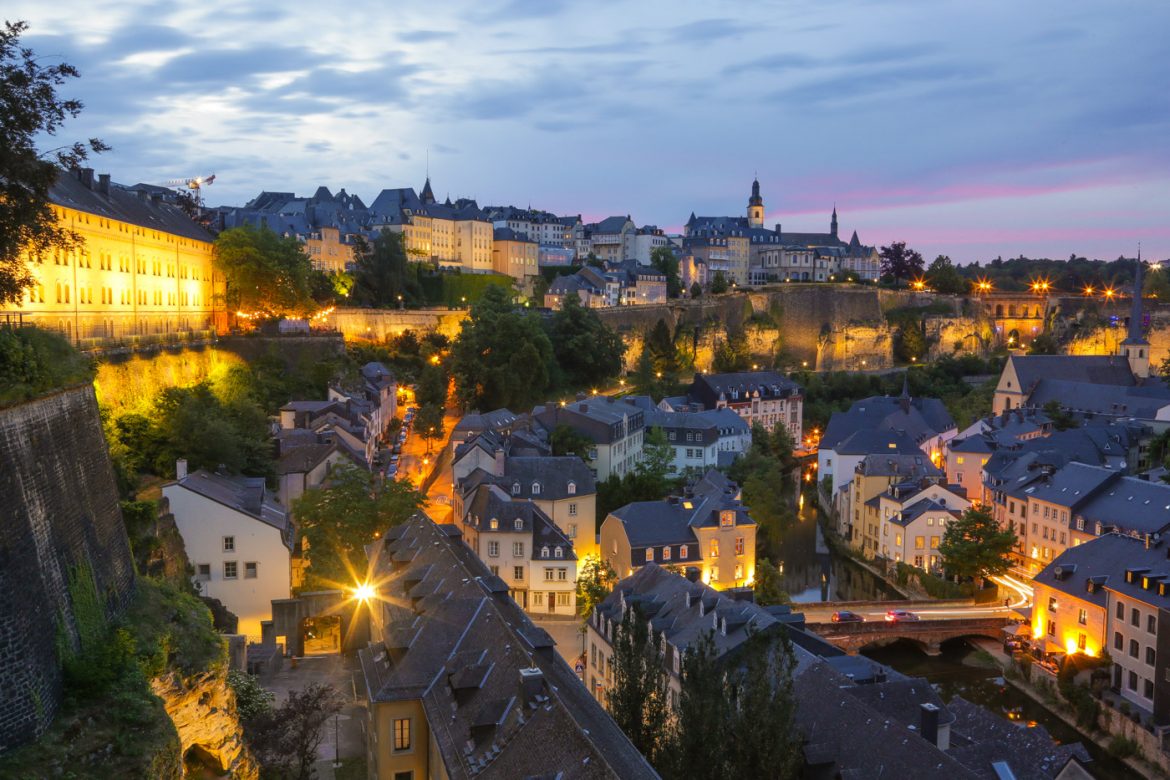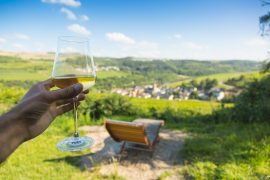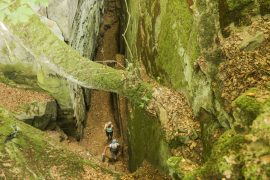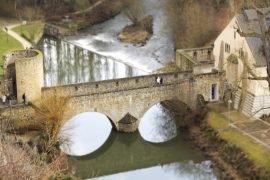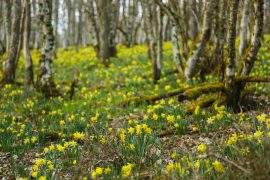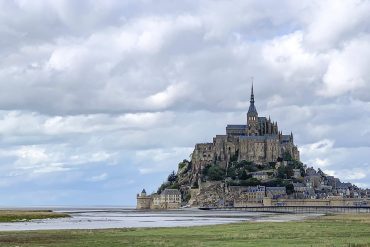Luxembourg City: It is state-of-the-art glass palaces and ancient fortifications, skylines meeting river valleys, a sleek cosmopolitan hub with a medieval layout at its feet, modern sophistication and antique simplicity woven into one dazzling tapestry…
Upon arrival at Luxembourg Central Station, train-hopping visitors may search for such many-faceted splendour in vain. The station’s main building, as well as its location, have a rather humble appearance. Yet, the entrance hall deserves more than just a quick pass-through. It invites travellers to find a moment of stillness amidst the frenetic come-and-go of people, to contemplate its interior, where a mosaic window reveals the outline of the city and where the ceiling is decorated with an iconic fresco by Luxembourgish artist Armand Strainchamps.
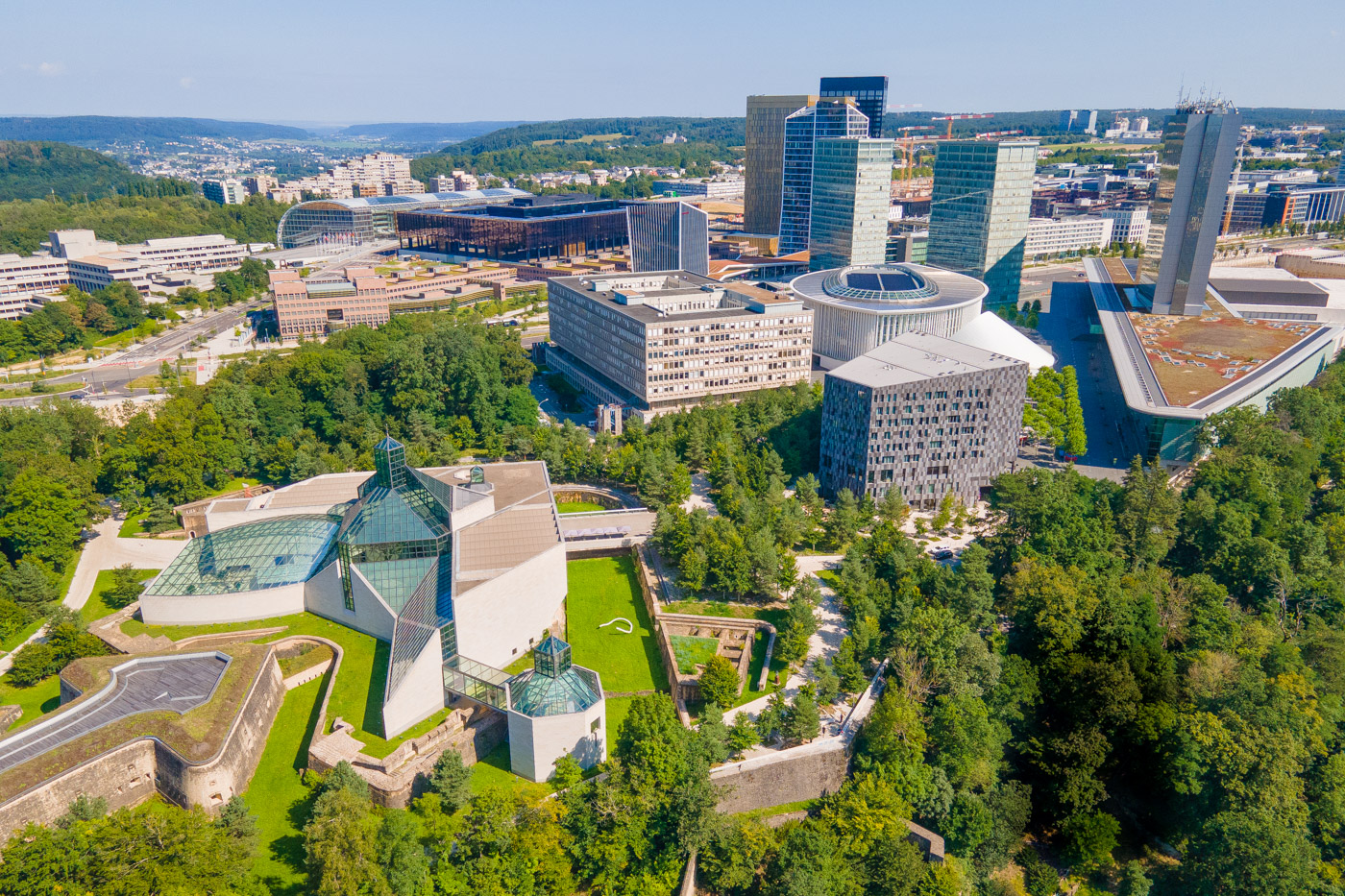
Exiting the main building, a recently reintroduced sight on Luxembourg’s urbanscape awaits the visitors: the tramline. Evidence of the capital’s efforts to reorganise and modernise its transport infrastructure, the tramline currently connects the railway station to the Ville Haute, Limpertsberg and the Kirchberg district. Following the tramway is the Avenue de la Liberté, a historical street that runs past iconic sights, such as the Place de Paris and the old ARBED building in the Place des Martyrs. Then one arrives at the Adolphe Bridge, a double-decked arch bridge that crosses the Pétrusse River and leads to the Boulevard Royal in Ville Haute. It has become an emblematic national symbol and a notable city attraction. Since its major redesign in recent years, the bridge’s lower deck is dedicated to accommodating bikers and pedestrians and also lends itself to scenic tours with splendid vistas over the river valley.
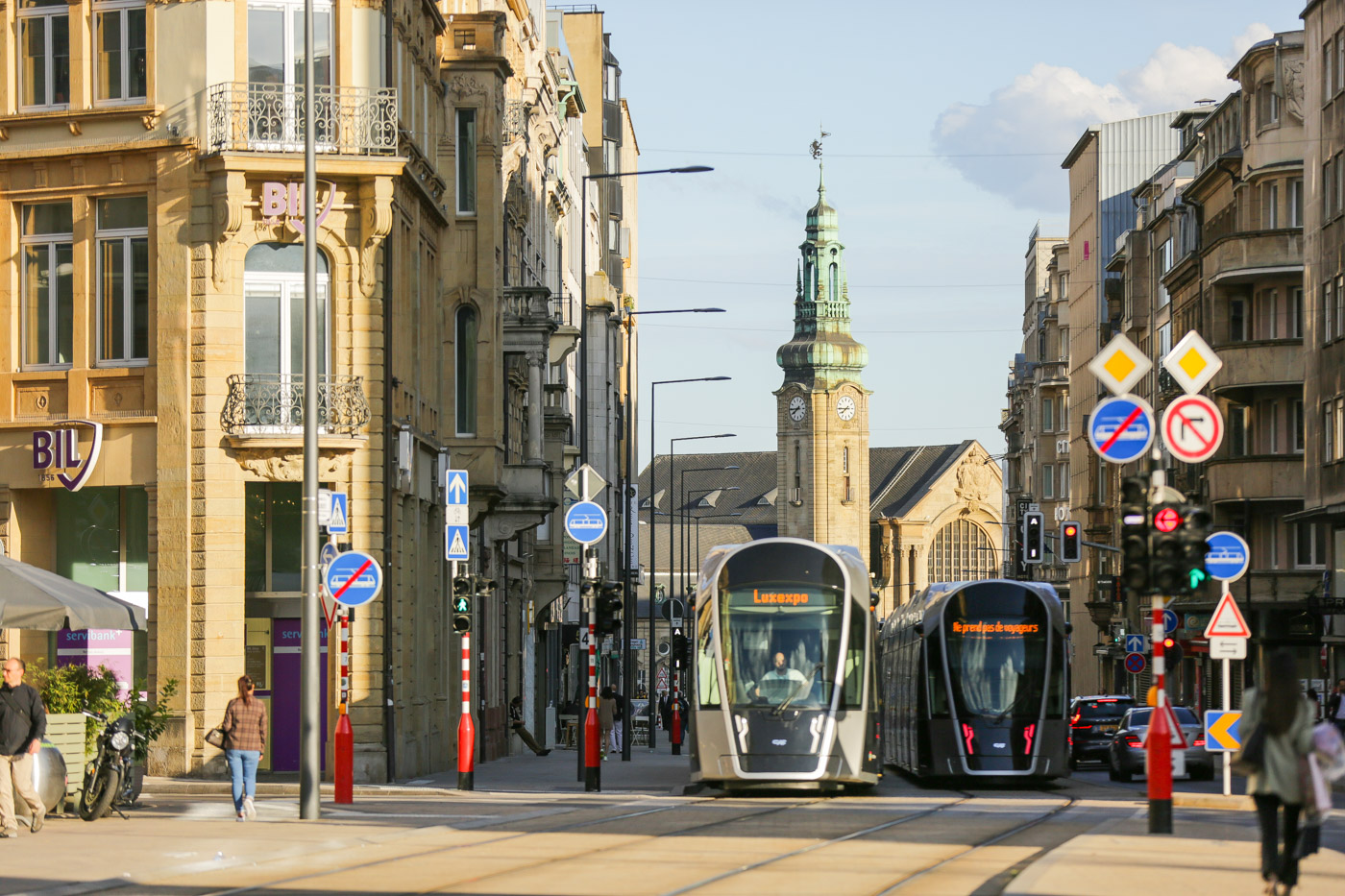
The Pétrusse Valley dominates Luxembourg City’s pictorial landscape. Its two main features are the rocks that are a natural extension of the prominent fortifications and the patches of green crossed by its name-giving stream. On one of its edges, the valley is enthroned by the Place de la Constitution, which entices visitors with its dazzling memorial, the Golden Lady. Initially erected to commemorate the fallen Luxembourgish soldiers of World War I, and after being knocked down by the Nazis in 1940, the historic monument also became a leading memorial against the Nazi regime. Today the Gëlle Fra, as the landmark is known locally, symbolizes freedom and resistance for the Luxembourgish people. Once you have paid your respects at Luxembourg’s Golden Lady, there’s more history to be appreciated right beneath the statue’s feet.
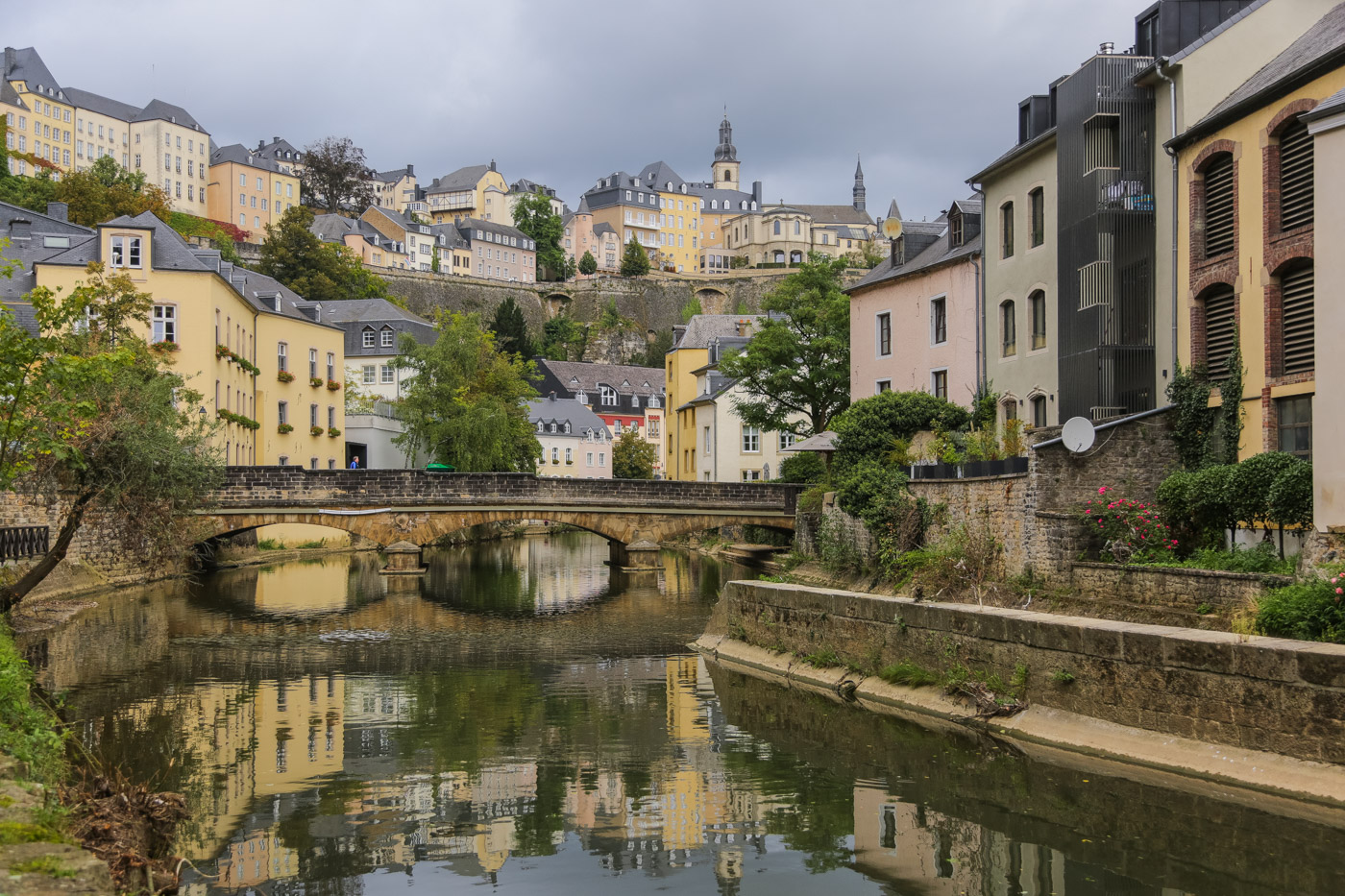
Underground, intriguing paths and ramparts journey into the past of the Fortress of Luxembourg. So impressive were the casemates, a labyrinth of tunnels that form part of the city’s ancient defences, that they earned Luxembourg the nickname ‘Gibraltar of the North’. Built in 1644, during the Spanish domination, and later enlarged by the French before being perfected by the Austrians during the 18th Century, this UNESCO World Heritage site is the historical pride of an entire nation today. With its multi-purpose tunnels – they served as barracks for hundreds of soldiers or were used as bakeries or slaughterhouses –, its atmospheric feel and a newly installed scenography, the subterranean passages are a spectacular playground for history aficionados and children alike. Although of an equal splendour, the Pétrusse Casemates are less prominent than the Bock Casemates. They are located further along, beneath the clifftop site that towers above the Alzette River and it used to house the original fort of Count Siegfried.
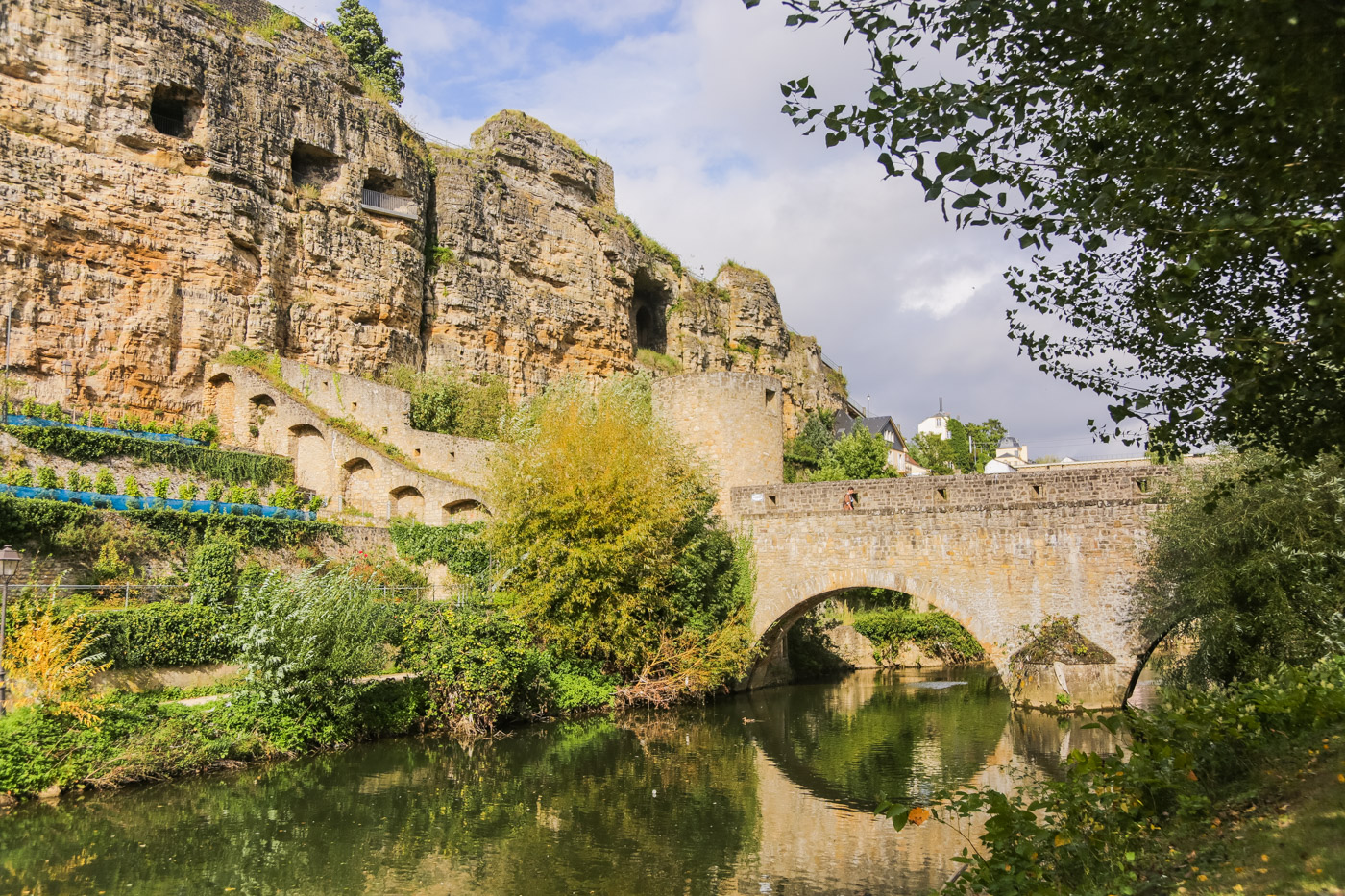
Still, the Bock Casemates are the real tourist draw. On its outer border, where the verdant valley is bridged by the historic Passerelle, a recently built, spacious skatepark blends organically into its fabulous surroundings. It’s a meeting place and haven for board sports enthusiasts, and the site has become a trendy hangout in no time. It’s also a great spot to soak up some Zeitgeist-freshness before heading into one of the capital’s oldest neighbourhoods.
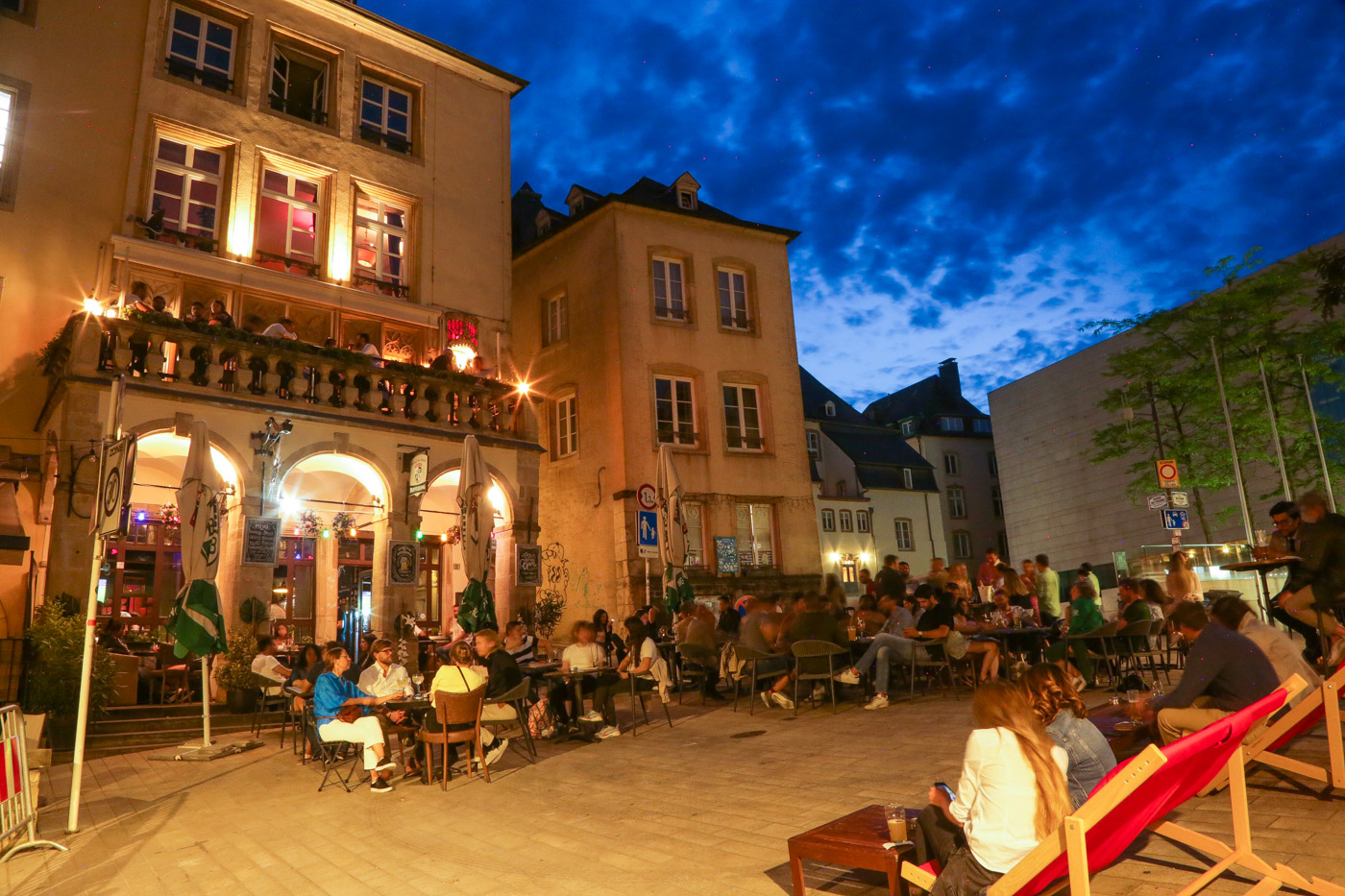
Once inhabited largely by craftsmen, the Grund quarter is situated in the valley on the banks of the Alzette River, and has preserved its unique rural character. Indeed, with its narrow, almost traffic-free streets, quaint bars and restaurants housed in traditional buildings by a peacefully flowing stream, the Grund seems like a little fairy-tale enclave suspended in time. In addition to being a popular nightlife precinct and home to iconic edifices such as the Neumunster Abbey or the National Museum of Natural History, the Grund valley is also the starting point of the Wenzel Circular Walk, a trail that guides visitors through the millennial history of Luxembourg City.
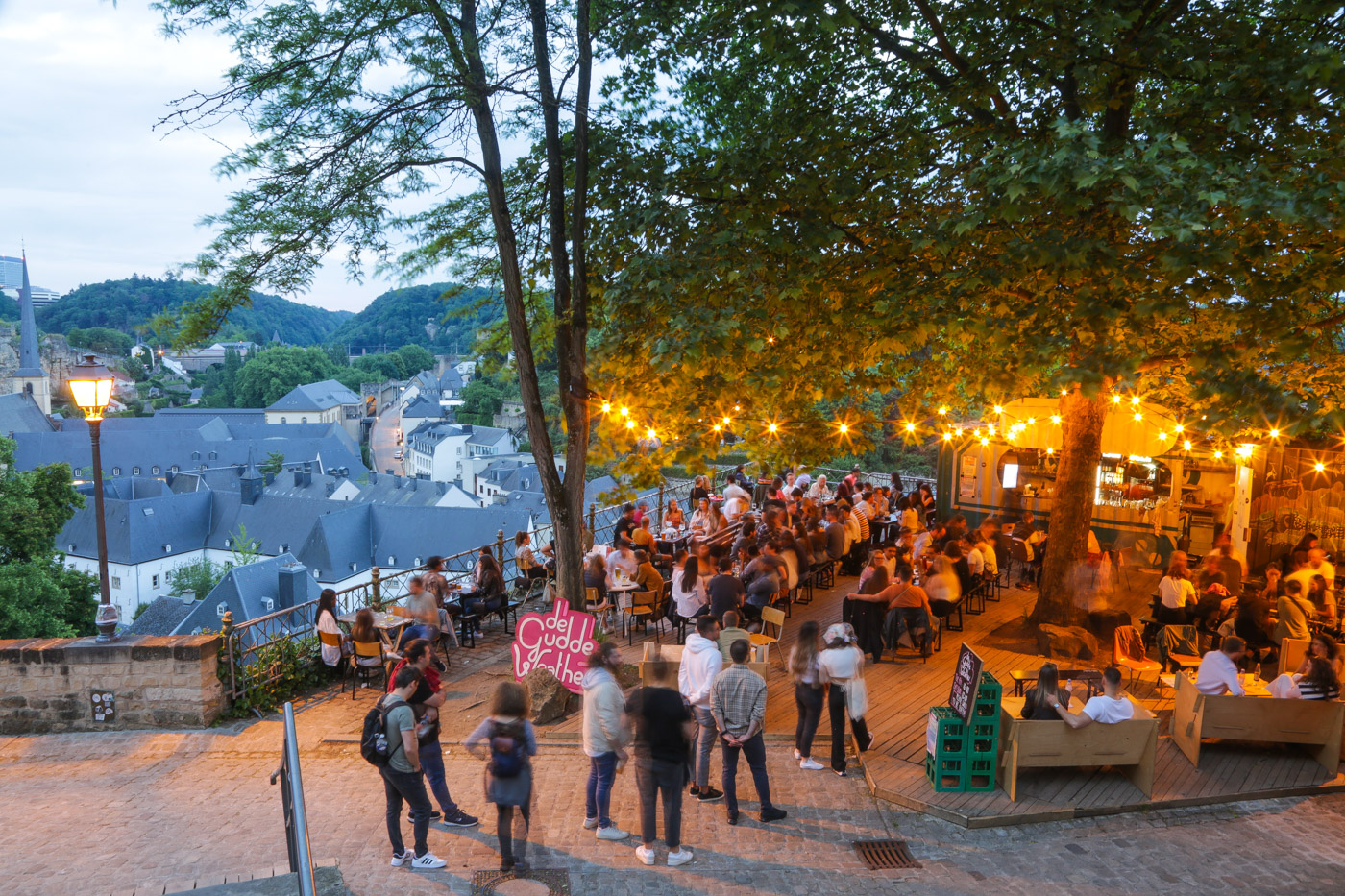
From this picturesque valley, visitors can take a free elevator that takes them to the Plateau Saint-Esprit, located in the court district. Breathing the air of the upper level of the city and wandering around its edges, which offer mesmerizing views over the Grund, it’s easy to feel a little dizzy and awe-struck. Panoramic vistas are most abundant on the trail of the Corniche, crowned as Europe’s most beautiful balcony, where a trendy pop-up terrace invites visitors to contemplate the view over a refreshing drink, in probably the hippest company of the whole city. The terrace belongs to the nearby De Gudde Wëllen, a ‘one size fit all’ venue that has been stirring up the urban music scene for some years now.
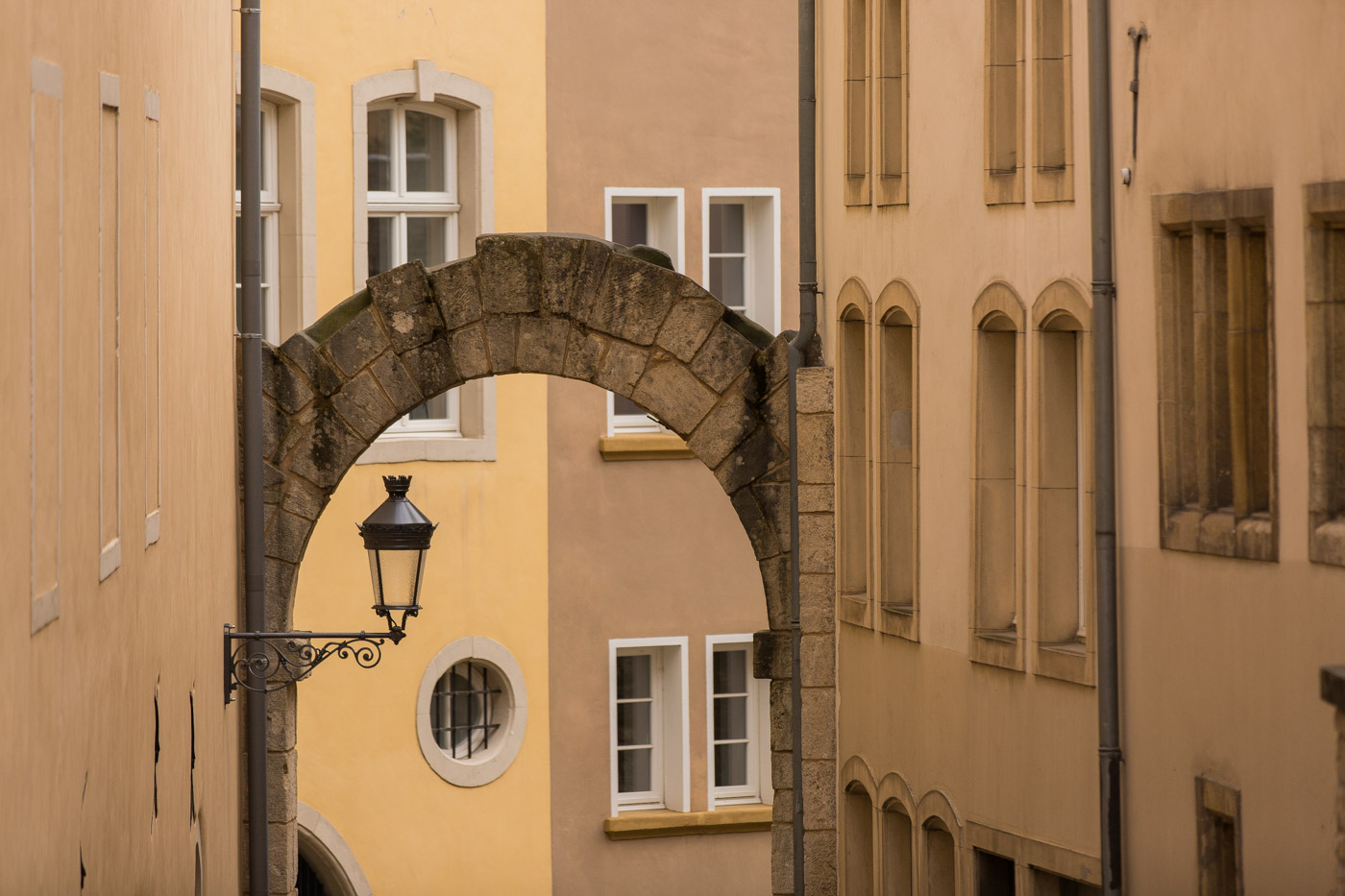
From this eclectic nightlife spot, the small-scale Rue du Saint Esprit leads into the Place de la Clairefontaine, whose centre features a monument in honour of Grand Duchess Charlotte. The square is bordered by the famous Baroque-style Notre-Dame Cathedral and the Government district. Moving on, right into the heart of the Old Town, the mighty Grand Ducal Palace emerges. As the official town residence of the Grand Ducal family, the building’s exterior lives up to its blue-blooded inhabitants; its equally majestic interior can be visited exclusively during the summer months. Visitors who want to treat themselves to exquisite sweets in close proximity to the monarchs, should stop by the famed Chocolate House vis-à-vis from the palace.
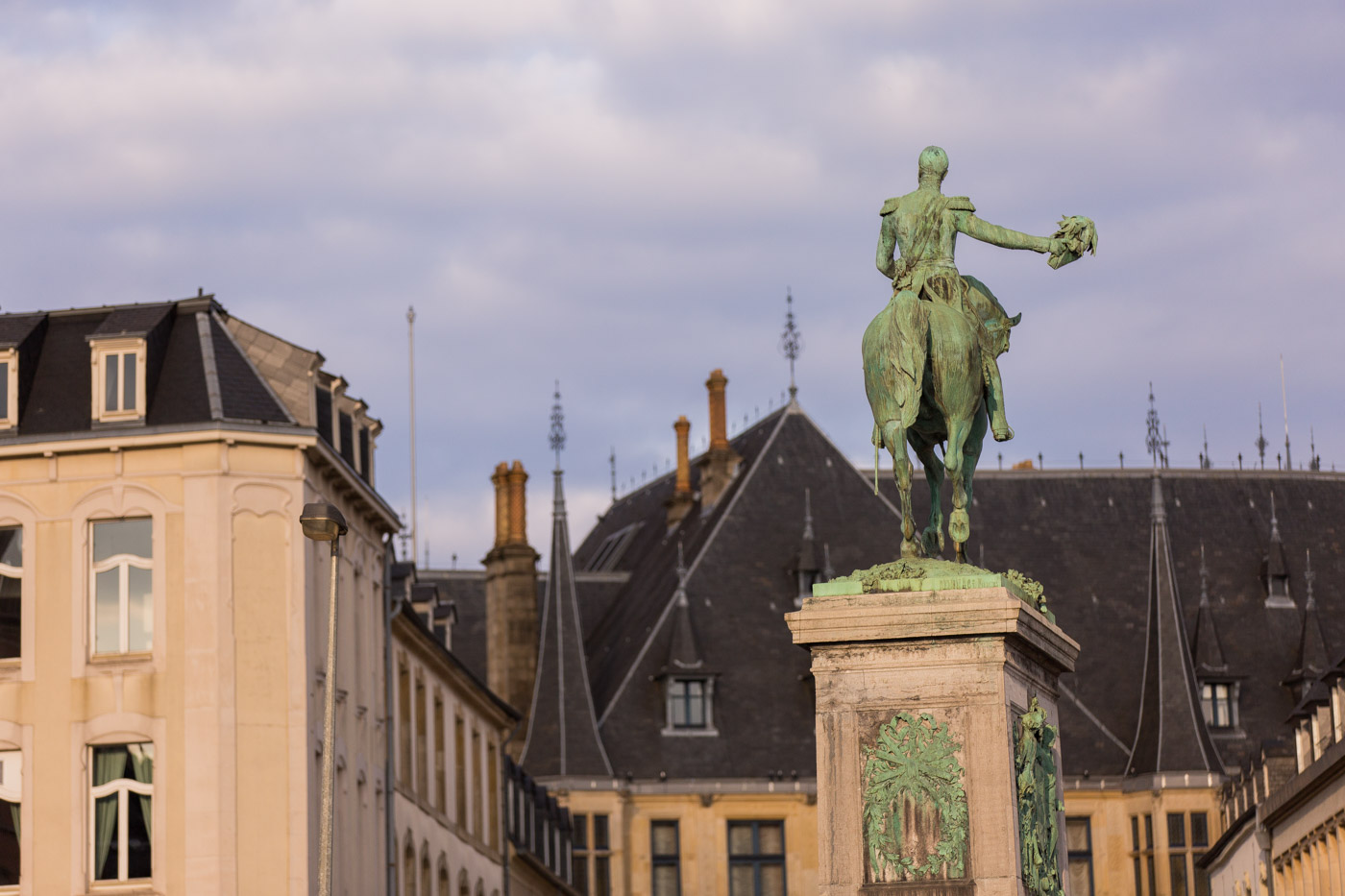
The very historical centre of the Old Town is a place locally known as “Fëschmaart”. This former crossroads of two Roman roads was an area that used to house the first fish markets, constituting the cornerstone of social life of then-inhabitants of Luxembourg City. Today, the Fish Market is home to the National Museum of History and Arts that boasts significant archaeological collections as well as medieval fine arts. After a sensorially and historically stimulating journey through the upper old town, unwinding at one of its many charming cafés seems to be just the thing to do. Konrad Café, for instance, is one of a kind amongst them. With its intimate cellar atmosphere, occasional live music and locally sourced produce, this café-bar delights juvenile hipsters and cosmopolitan businesspeople alike.
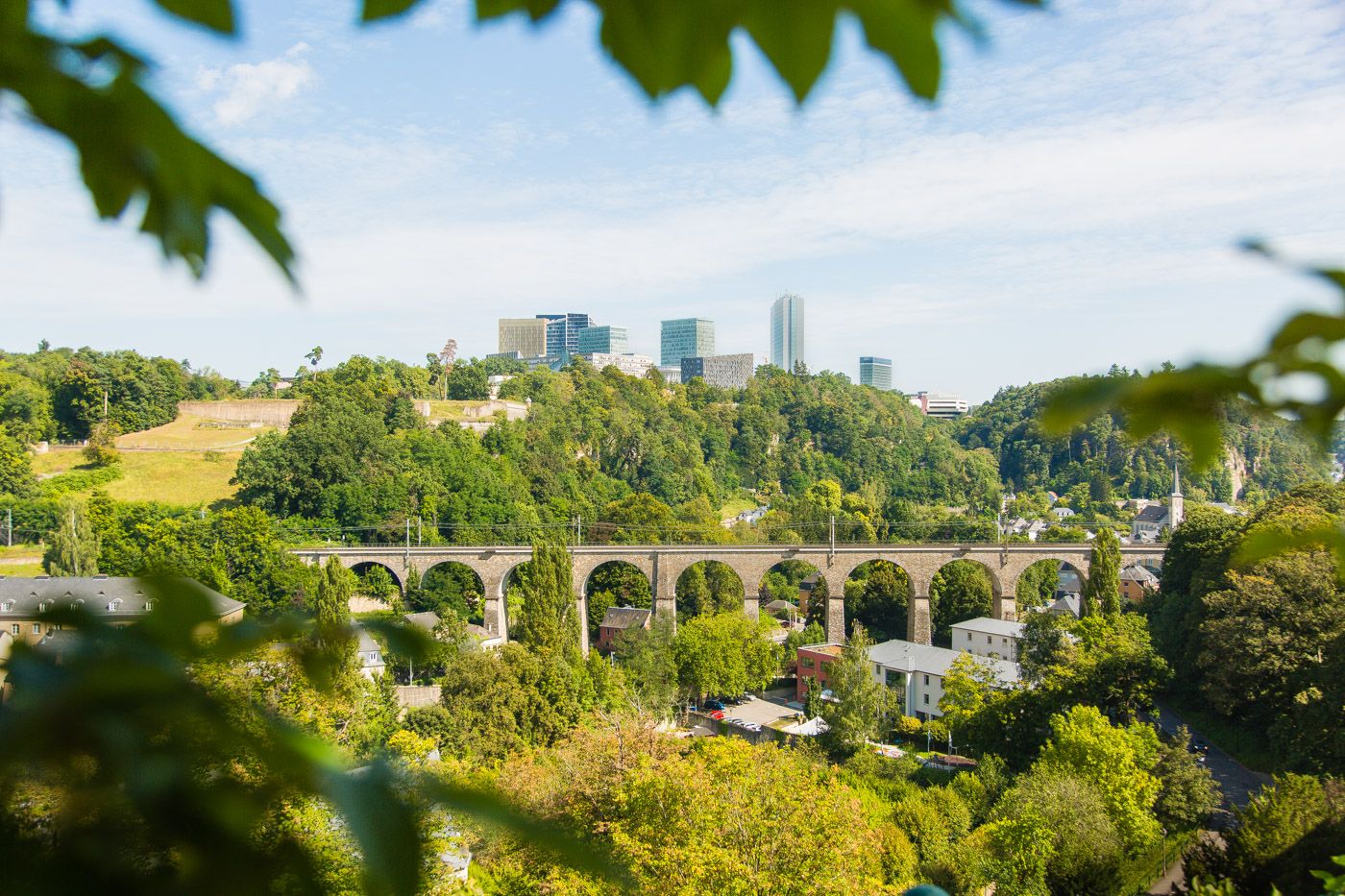
For the very restless among the city’s visitors, a trip to the verdant municipal park is a promising adventure. Kinnekswiss, a most popular park amongst both residents and foreigners, is laid out between the Champ du Glacis and the Avenue de la Porte Neuve, and friends of all kinds of leisure sports come here to enjoy them. Why not start the day off there with an energizing outdoor yoga class, before soaking up the atmosphere of the Kirchberg district and its monumental sights? Linked to the upper town by the landmark-Red Bridge, the Kirchberg plateau is Luxembourg’s banking and financial centre. This neighbourhood of superlatives is also home to a great deal of outstanding contemporary architecture, and it has experienced an unparalleled growth in recent decades.
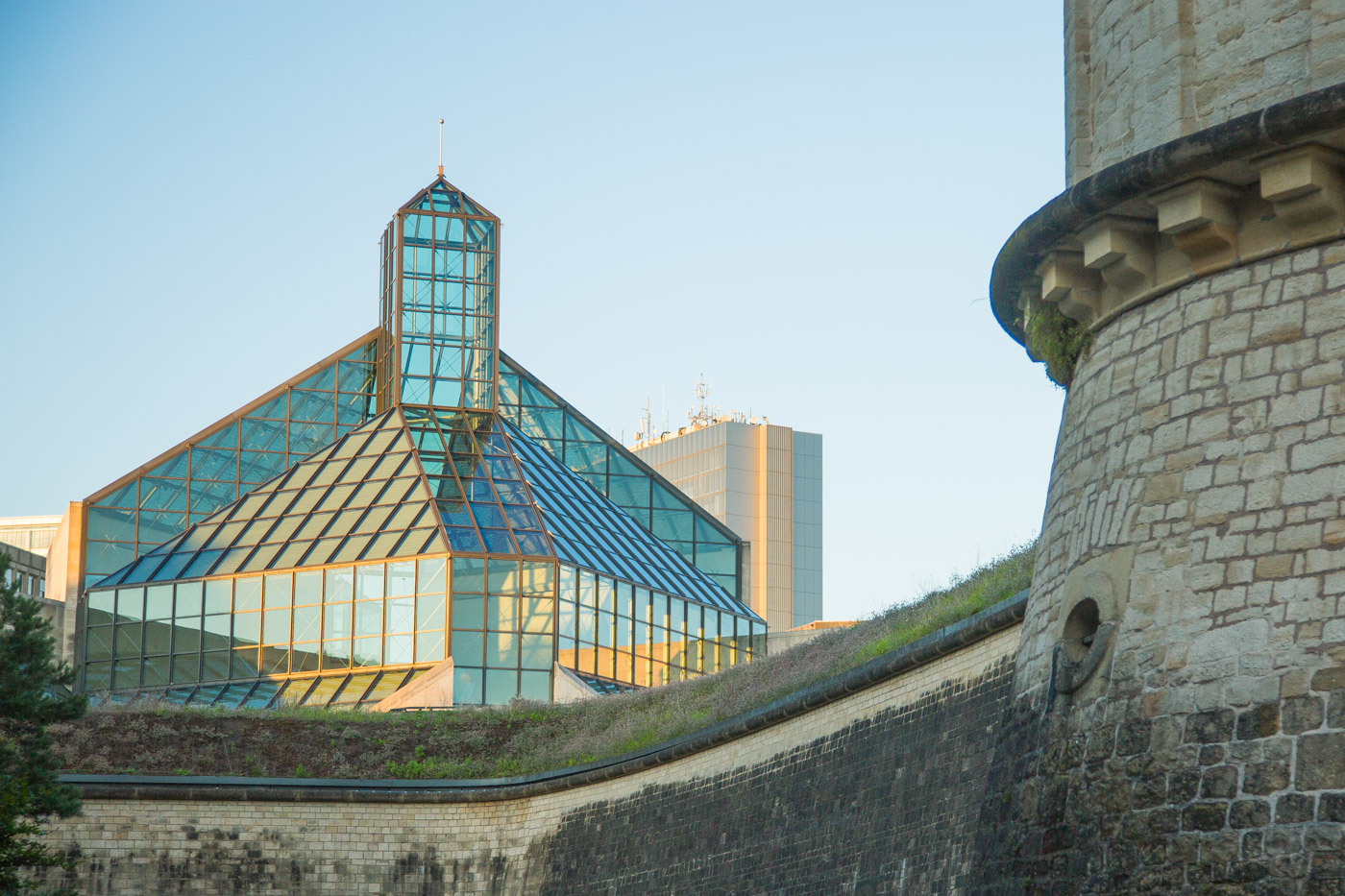
The first discovery at the district’s gates is the Museum of Modern Art Grand Duke Jean MUDAM, which enchants visitors and passers-by alike with its compelling outer design, its eclectic collections, and its views over the surrounding Park Dräi Eechelen. MUDAM’s neighbouring cultural institutions, the eye-catching Philharmonic Concert Hall with more than 800 vertical columns and the Place de l’Europe, are equally spectacular. Passing by the many other superb structures that host important organisations, such as the European Investment Bank; or seats of the European Union, such as the European Court of Justice will top off the experience of immersing oneself in the modern parts of this highly versatile city.
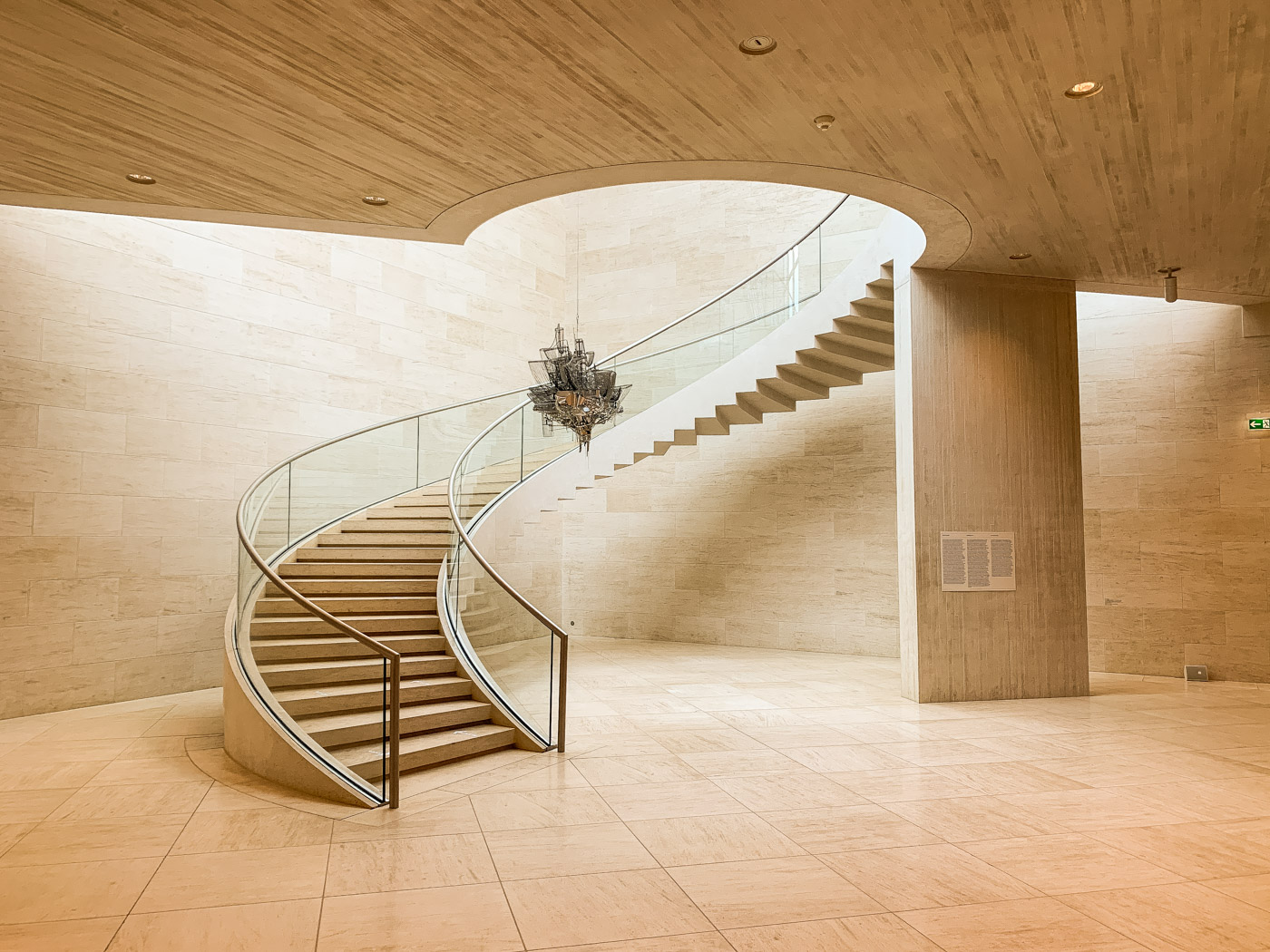
Diversity and enticing discoveries around every corner: journeying through Luxembourg City will make it clear to visitors that ‘size doesn’t matter’. Despite its manageable size, this underrated capital bursts with a plethora of sights, experiences and rhythms. Moreover, the good thing is that the city remains full of surprises and uncovered facets, even to locals and long-time residents, who are enchanted by its ever-changing face, over and over again!


